HOLIDAY EDITION
For those that are new here: thanks for coming along.

I'm an architectural photographer. I travel around Britain recording and interacting with special places that have a spirit about them. I work from my camper van called Woody and I share my experiences via this digest.
⚡️ Missed the last digest? Here it is.
⚡️ View the digest archive here.
⚡️View the Members Only page here.
THE ANGLO SAXON EDITION
I'm on holiday this week. Over the last few weeks I've been putting together this special Anglo-Saxon edition of the digest.
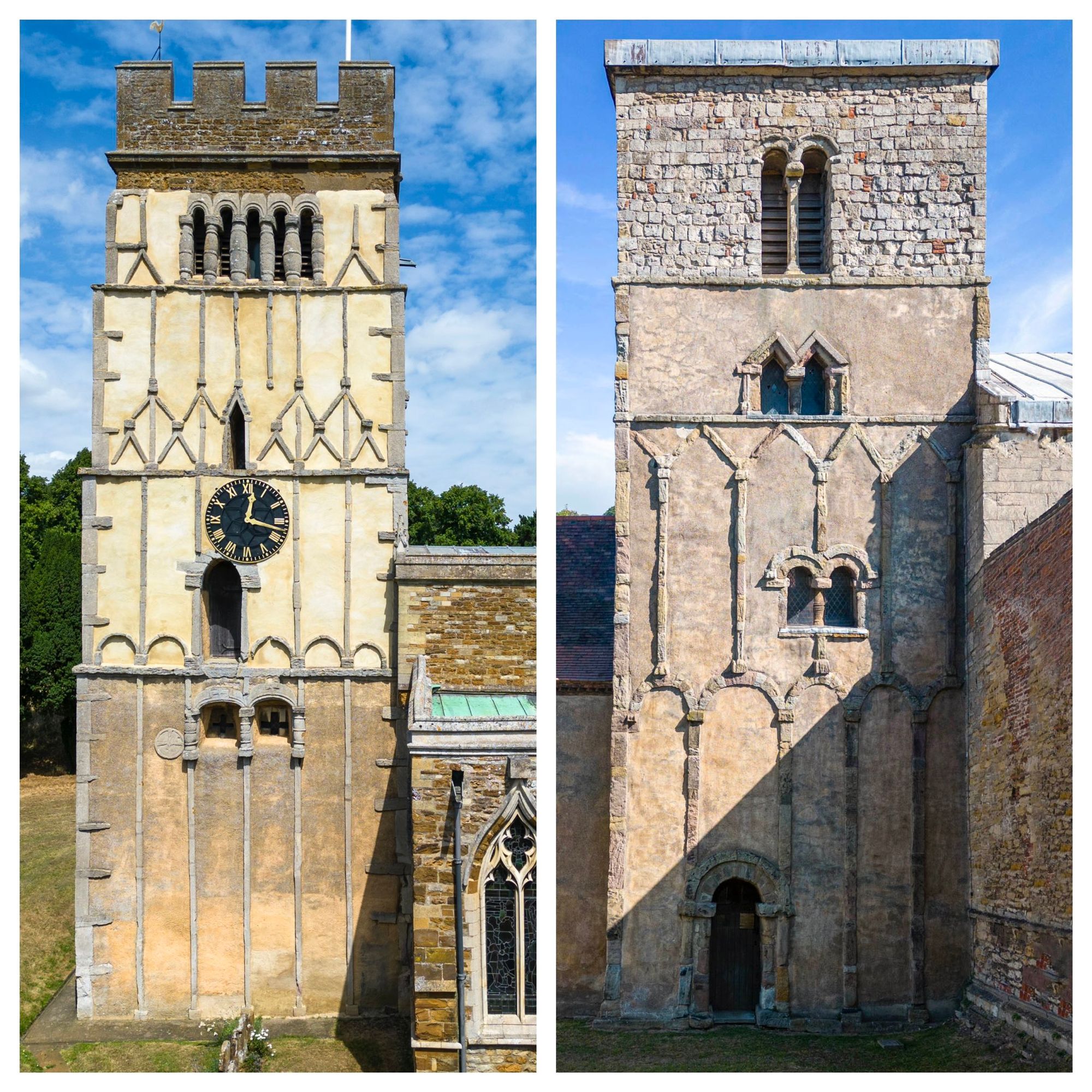
“The Bartons”: two C10th Anglo-Saxon towers compared - a real treat to see them both together. Earls Barton in Northamptonshire and Barton-upon-Humber in Lincolnshire.
"We carry within us the wonders we seek without us"
Thomas Brown , Religio Medici, 1643
Christ in Majesty at St. John the Baptist, Barnack.

If ever there is a testament to a work of art, it is when it makes our digital dystopia (and the devices associated with it) evaporate into the ether.
My first glimpse of the late Saxon stone carving of Christ in Majesty loosened my grip on the device in my hand and reminded me that Apple had been a temptation since Adam and Eve in the Garden of Eden.
There comes to certain artists a time in their lives where the culmination of their life's work is caught up in a single piece. Think of Da Vinci's Mona Lisa or Michelangelo's David. The Christ in Majesty at Barnack is another such piece.

"There comes to certain artists a time in their lives where the culmination of their life's work is caught up in a single piece."
I've read about the golden section and Fibonacci's principal, the rule of thirds and the negative space over the positive. This piece encapsulates that and more. There is a sense that the belief, the artist, the society, the material and the line has resolved itself into this single carving.
Indeed, it's difficult for the eye to leave the orchestrated geometry. There is nowhere for observation to bleed out. It's in this eternal gaze that it seems to encapsulate all faiths and not one, with a humility that is emphasised by the hands, feet and Buddhist like bowl of the belly.
I came away from the sculpture feeling elevated and grateful that I've been able to sink back into a way of seeing that needs no screen or scroll.
I'm reminded of the words of Robin Wall Kimmerer when talking of her observation of moss:
" With sophisticated technology, we strive to see what is beyond us, but are often blind to the myriad sparkling facets that lie so close at hand. We think we're seeing when we've only scratched the surface. Our acuity at the middle scale seems diminished, not by any failing of the eyes, but by the willingness of the mind. Has the power of our devices led us to distrust our unaided eyes? Or have we become dismissive of what takes no technology but only time and patience to perceive? Attentiveness alone can rival the most powerful magnifying lens."
Robin Wall Kimmerer: Gathering Moss.

Originally from Digest: 30 Sep 2022.

ANGLO-SAXON SURVIVALS
Here are all the places that I've visited in my camper-van-camino.
All the places can be visited and are free to access.
THE MAP
I've put together a useful map of all the places mentioned in this digest here:
St. Mary's Church, Breamore, Hampshire.

Perhaps one of the most significant churches of Saxon origin in the country. A remarkable survival of the late C10th and early C11th. It's a must see and not far from Salisbury and Long Crichel.
The church exterior




The gaping porch holds an Anglo Saxon Rood.
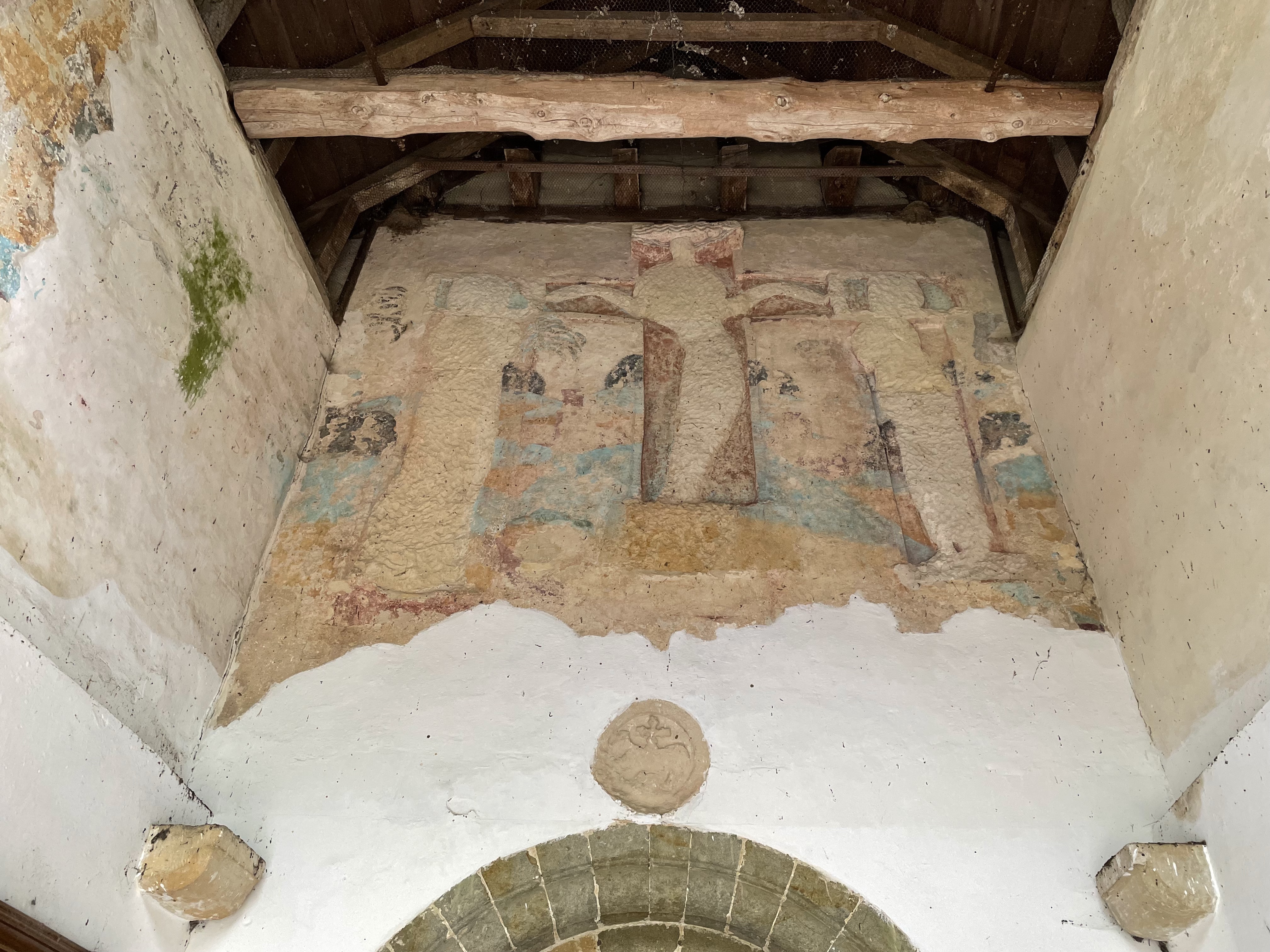
The church interior

As well as the intentional monuments, we have here, below, an unintentional monument to the Anglo-Saxon mason caught in the lively cut of their axe. .

A remarkable survival - Anglo-Saxon door and inscription: “HER SWUTELATH SEO GECWYDRAEDNES THE” - “Here the covenant [the word] is manifested to thee”

Looking up to the Anglo-Saxon door arch.

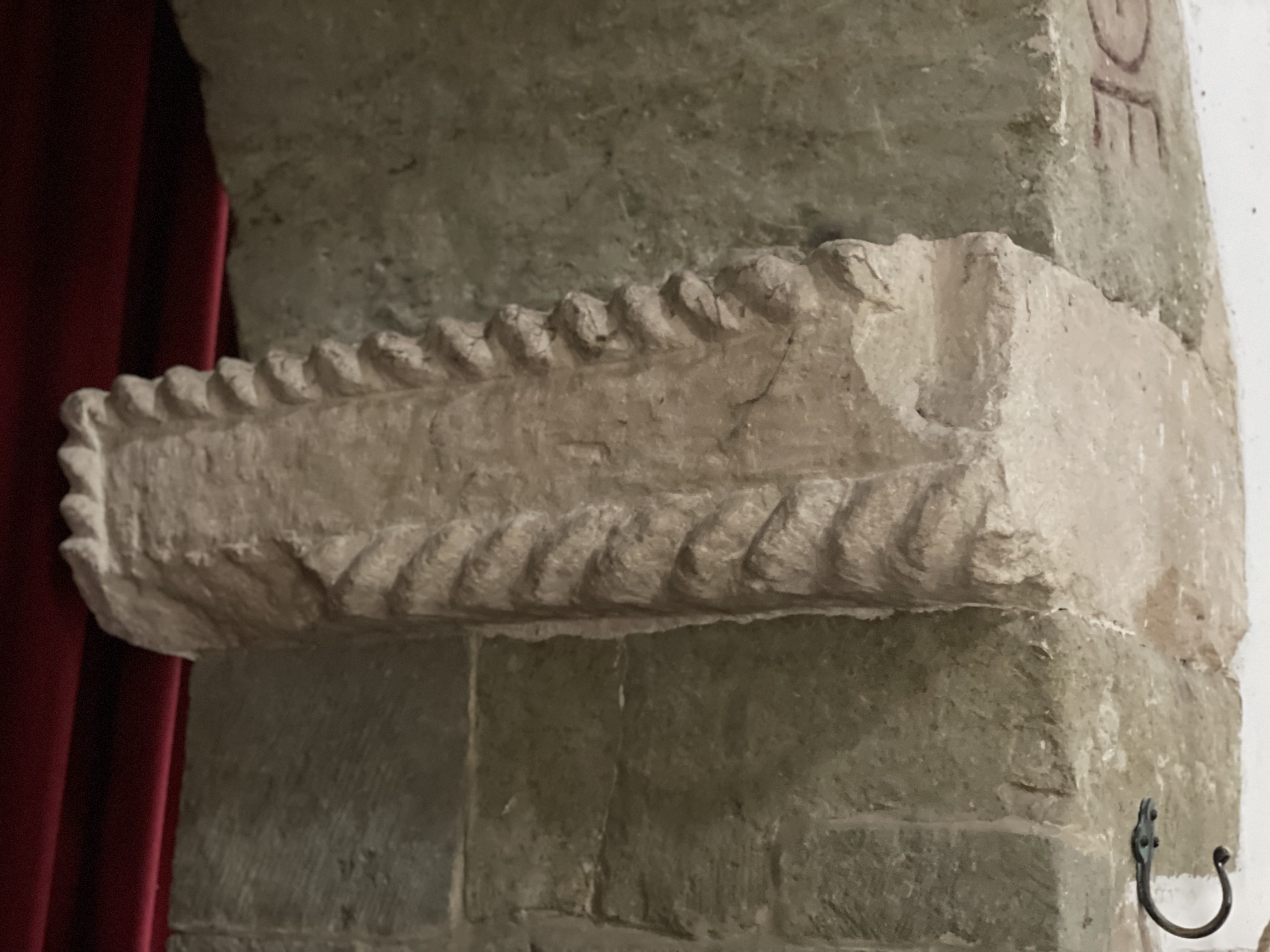
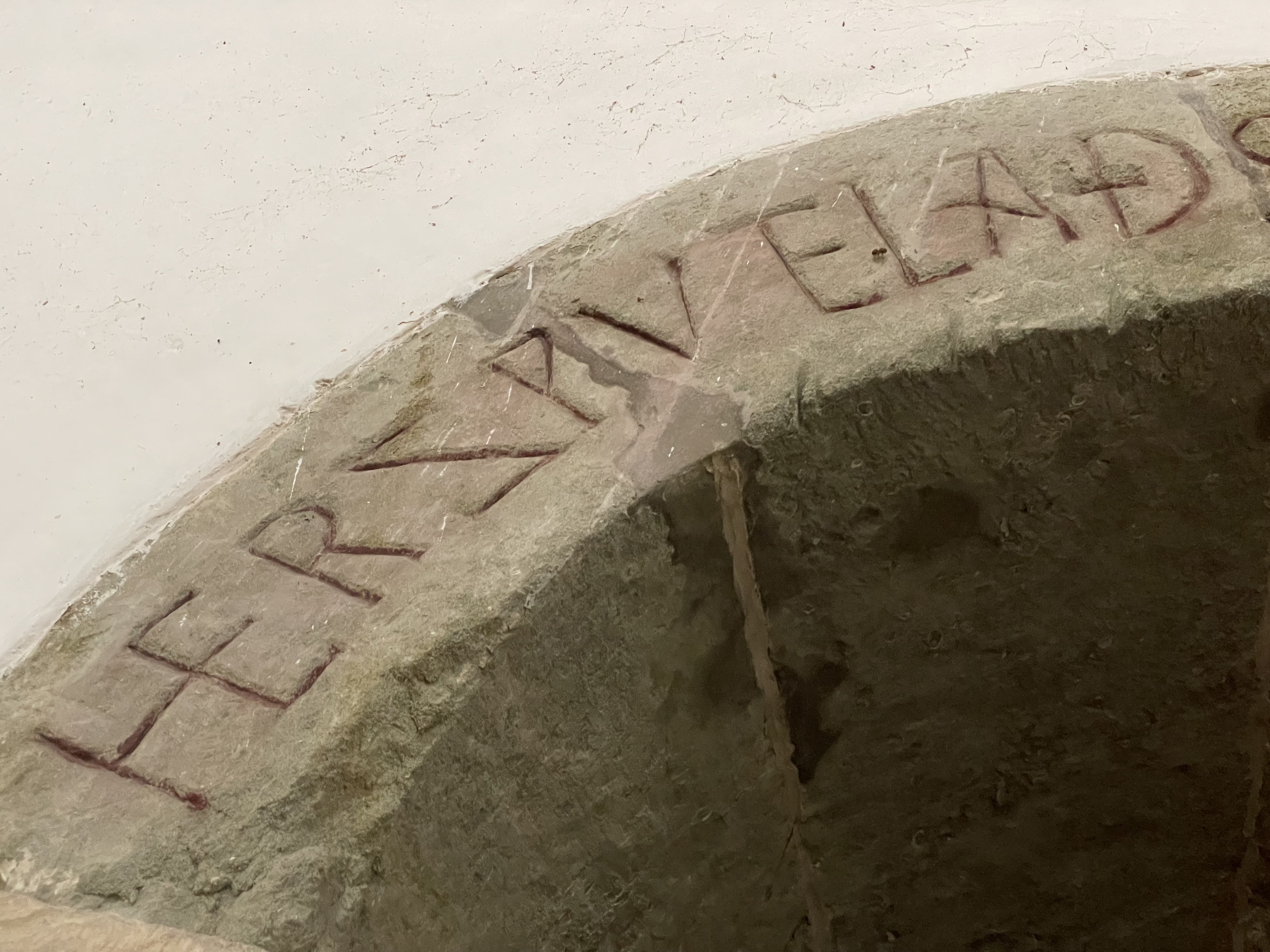

Members can unlock extra content on Breamore here:

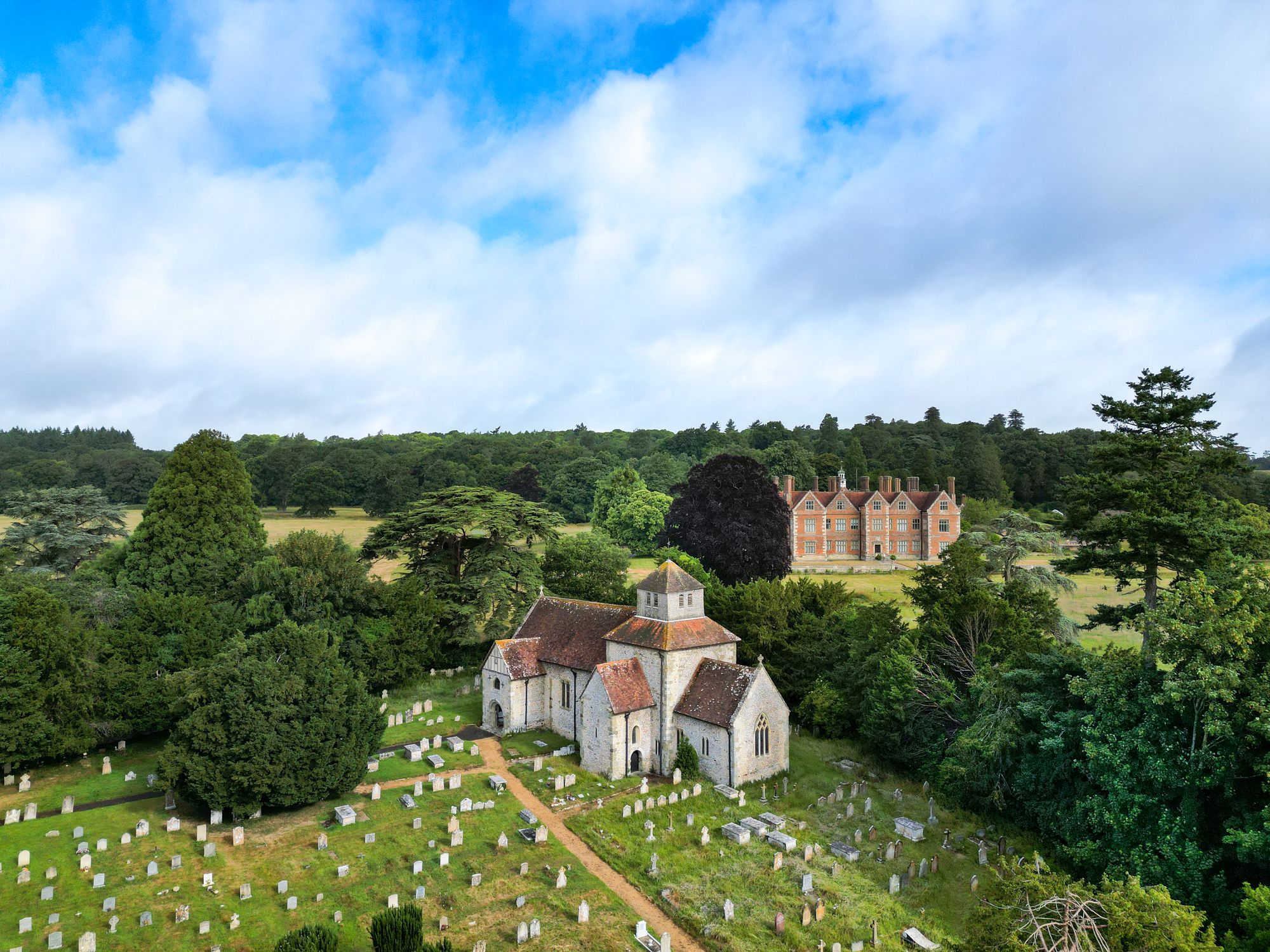
St. Mary's, Wirksworth, Derbyshire
The church holds within its walls a remarkable Anglo Saxon survival. A coffin lid carving which is probably mid C9th, and depicts scenes from the life of Christ.
If ever there was evidence of a link with the Byzantine of continental Europe, then here it is:
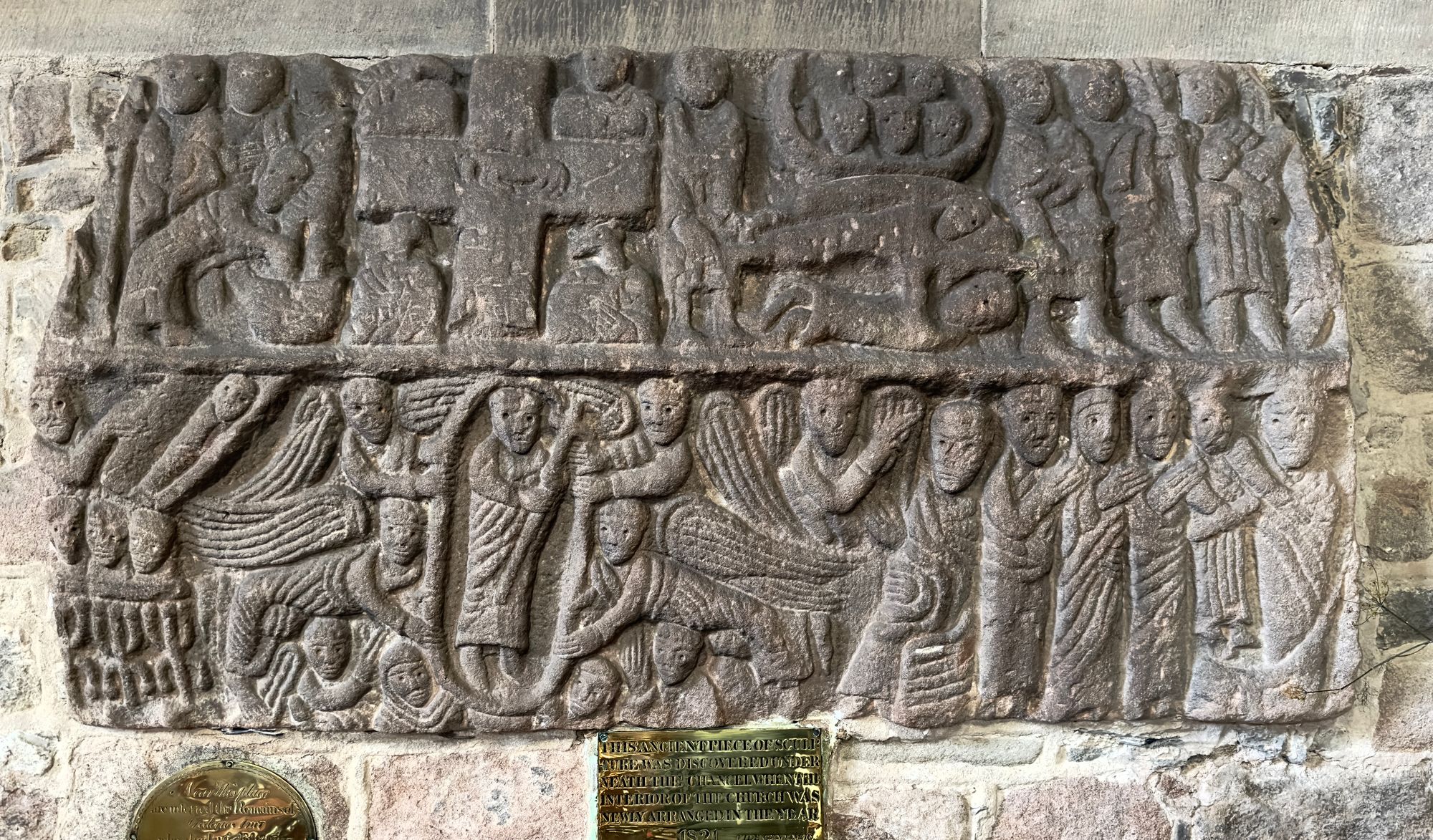

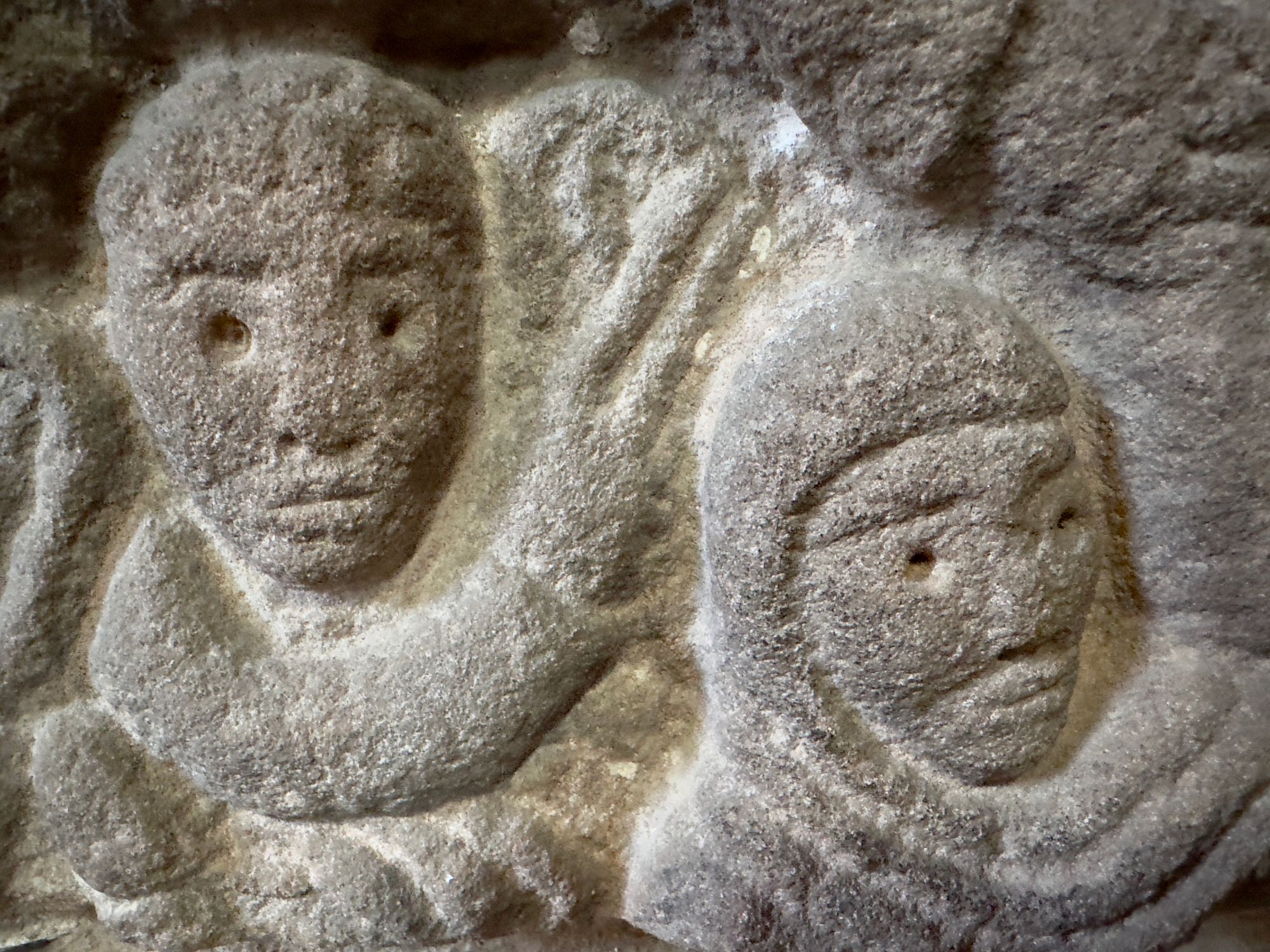
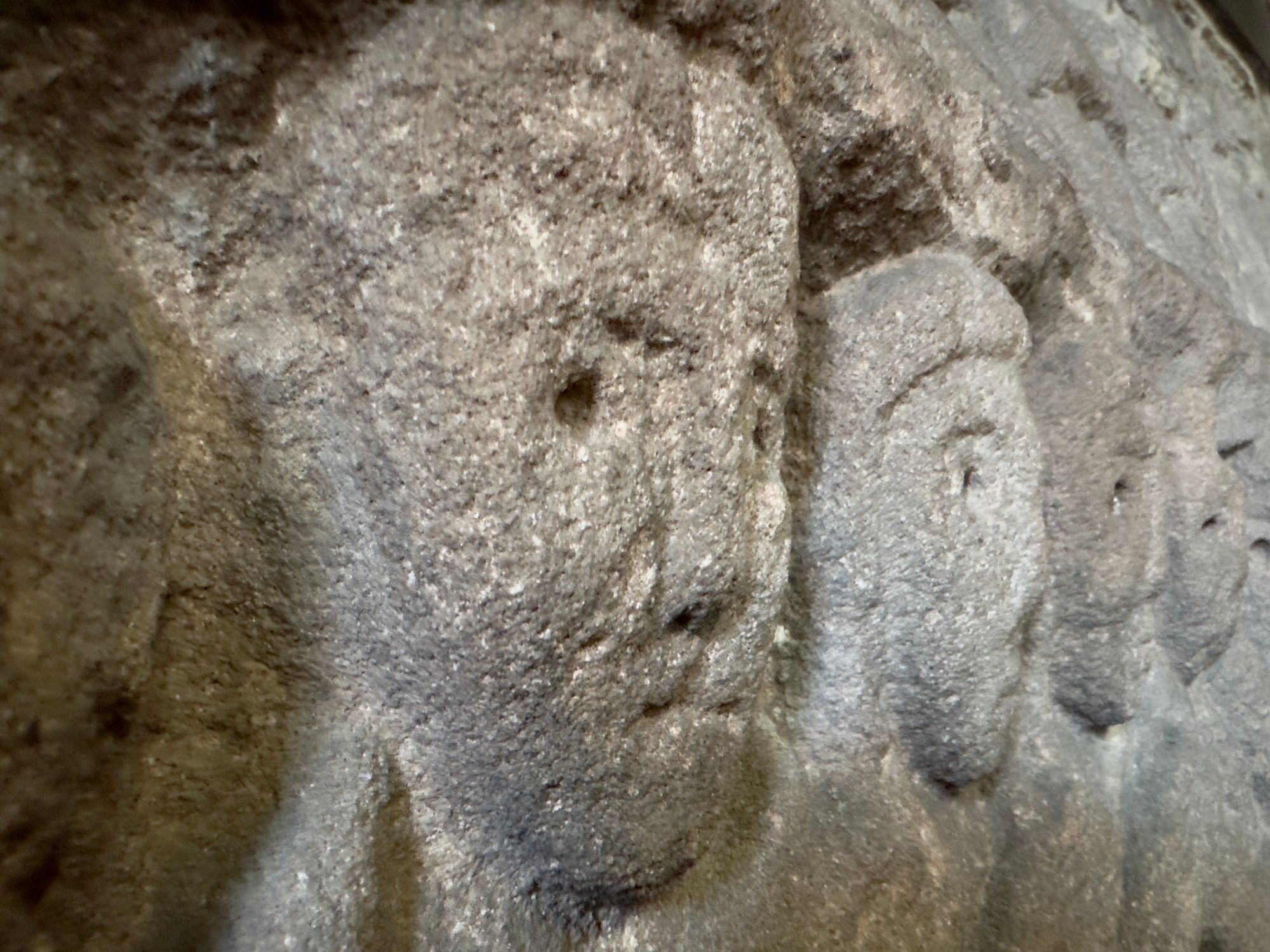

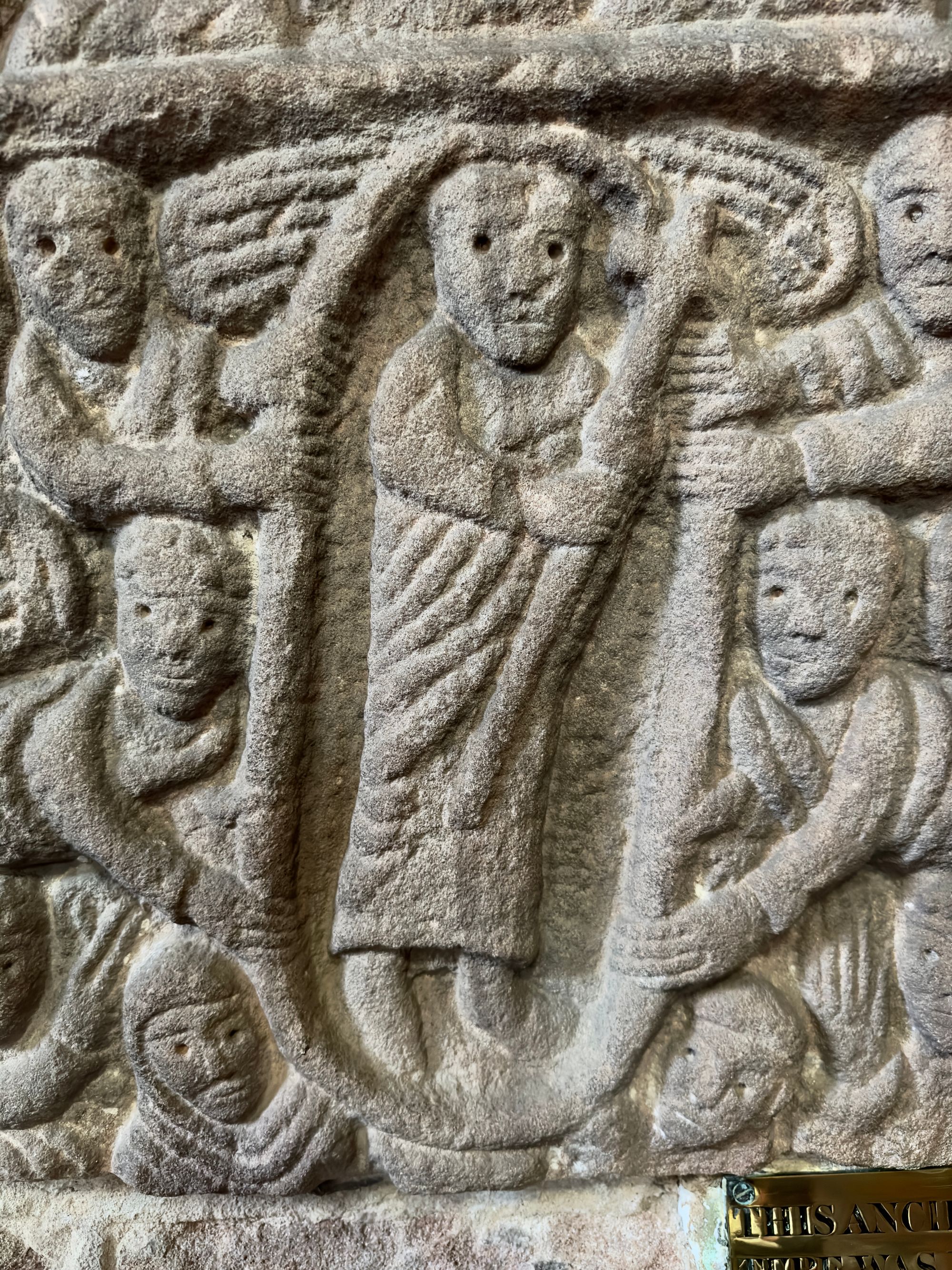
Members can unlock extra content on Wirksworth here:



St. John the Baptist, Barnack
The Saxon tower (with additional spire) is a delightful mix of long and short work crossed with the millennia-aged patina of Barnack stone. The Collyweston stone roof in diminishing courses along with the local stone build makes the church look 'of' the ground rather than 'on' it.
Exterior





Quoins maketh a church.

Interior
Looking into the Saxon space of beneath the tower - check out the triangular-headed door and window - but the most intriguing elements are the 'sandwich' capitals with rounded abaci. They remind me of custard creme biscuits. I shall call them custard creme capitals.

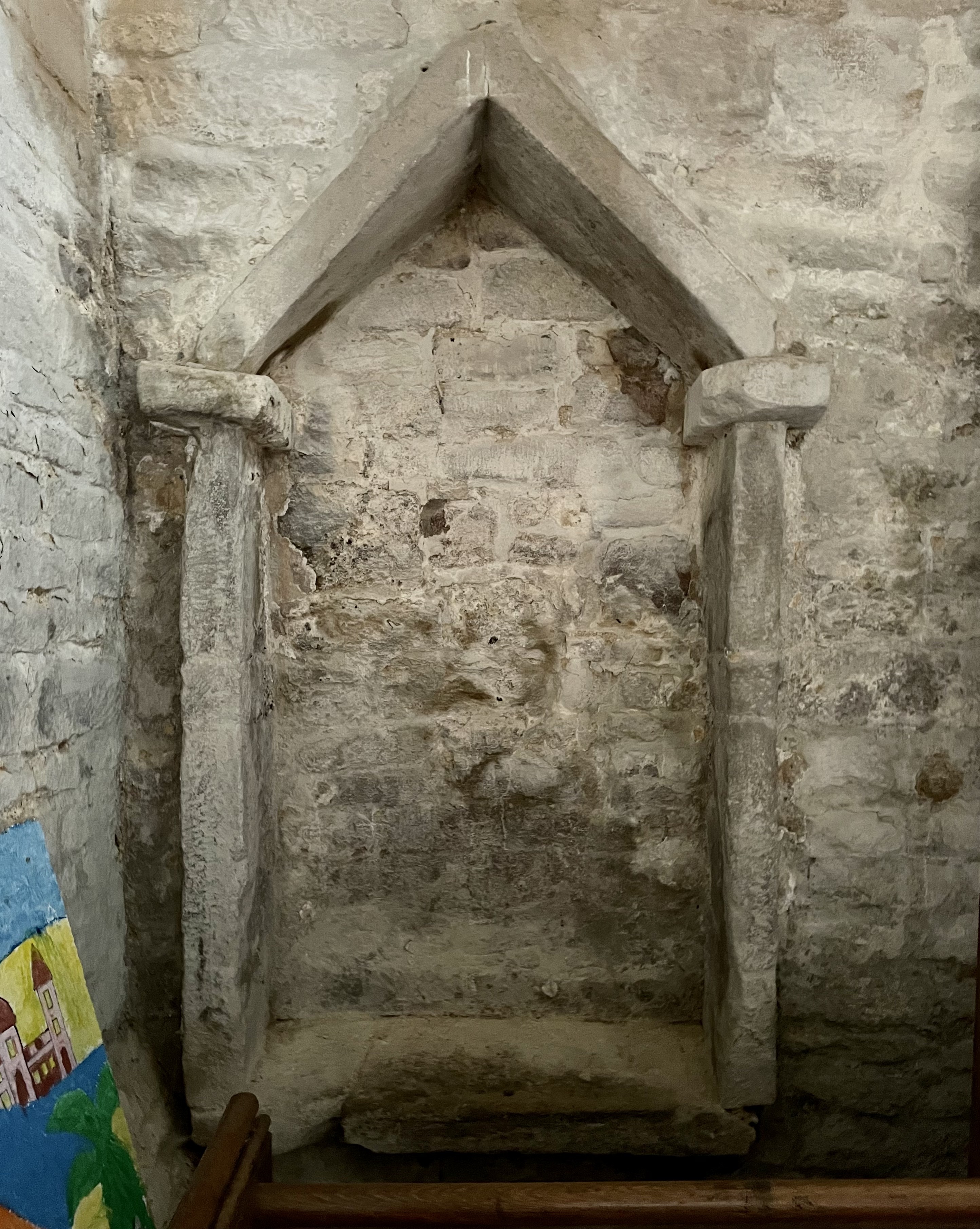


St. Peter's, Barton-Upon-Humber, Lincolnshire
No matter how evocative the tower is at St. Peter, I think it is the simplicity of the earlier nave that appeals to me the most.
However, the tower is a defining structure in the history of English architecture. It was Thomas Rickman who, in the early C19th identified the style of Anglo Saxon architecture through this church.
I've tried to work out why it appeals so much. It relates, of course, to its age, to my past obsession with Anglo-Saxons, and it has a structural 'innocence' defined by the strap work.

The history of the church is quite complex, but its form is called 'turriform' - a church with a tower-nave.



The church was closed when I visited - although the opening times stated that it should have been open. It is looked after by Historic England. This church has possibly had the most extensive investigations and archaeology than any other. Below is a plan of the burials on the circular mound - some predate the church.

The image above was taken from the wonderful HE report which is openly and freely available as a pdf download here.

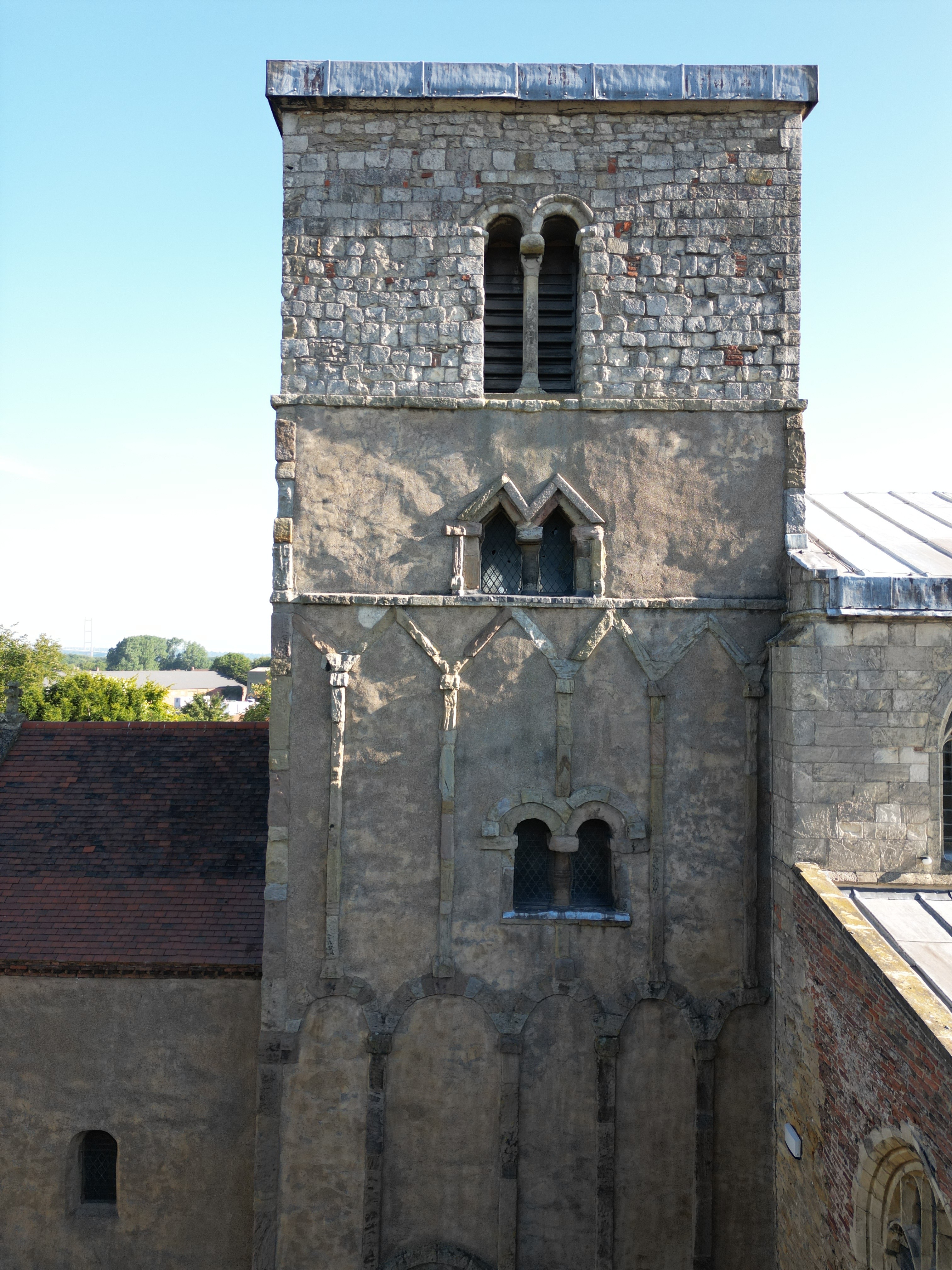
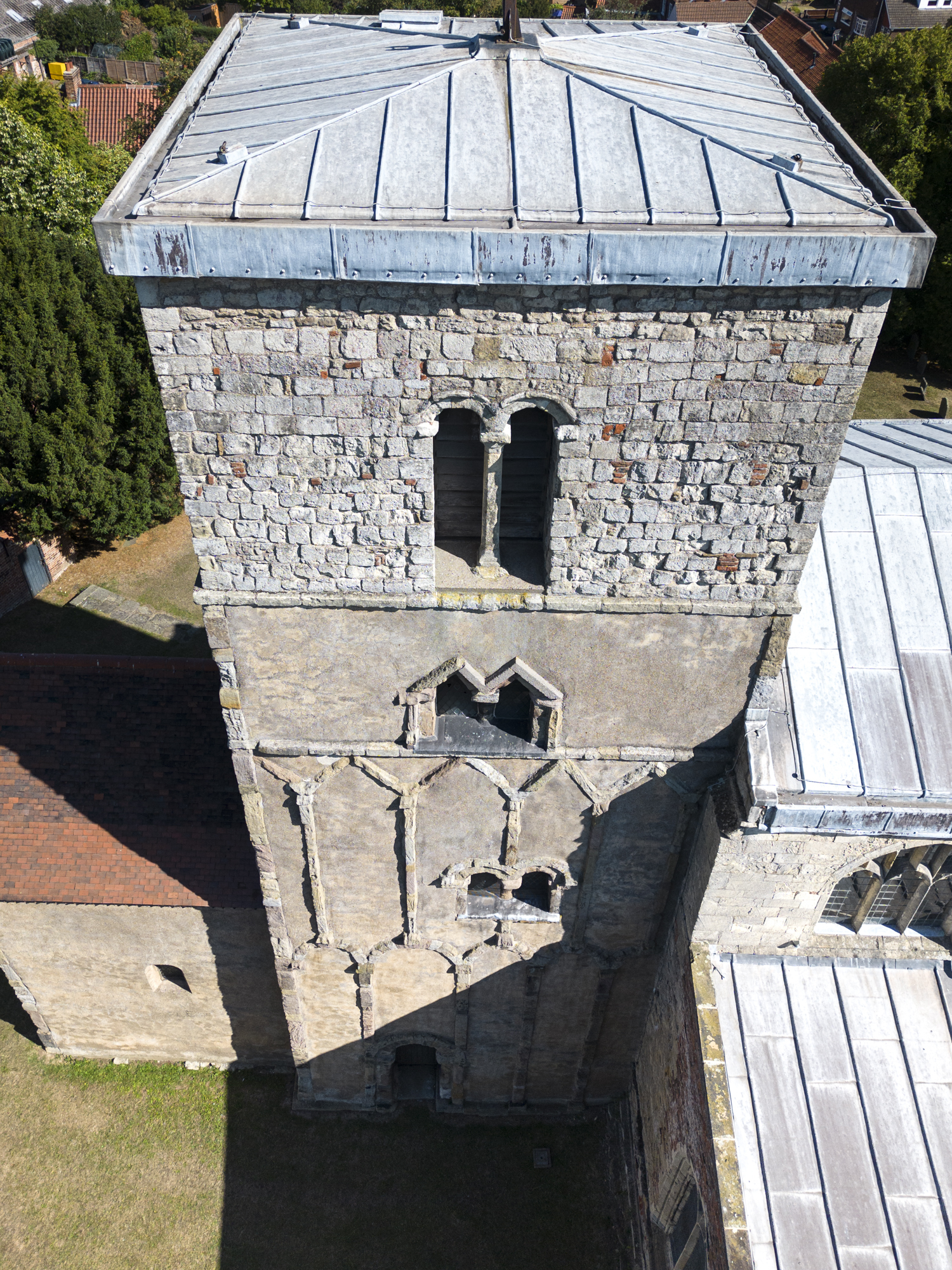



Members can unlock extra content on St. Peter here:
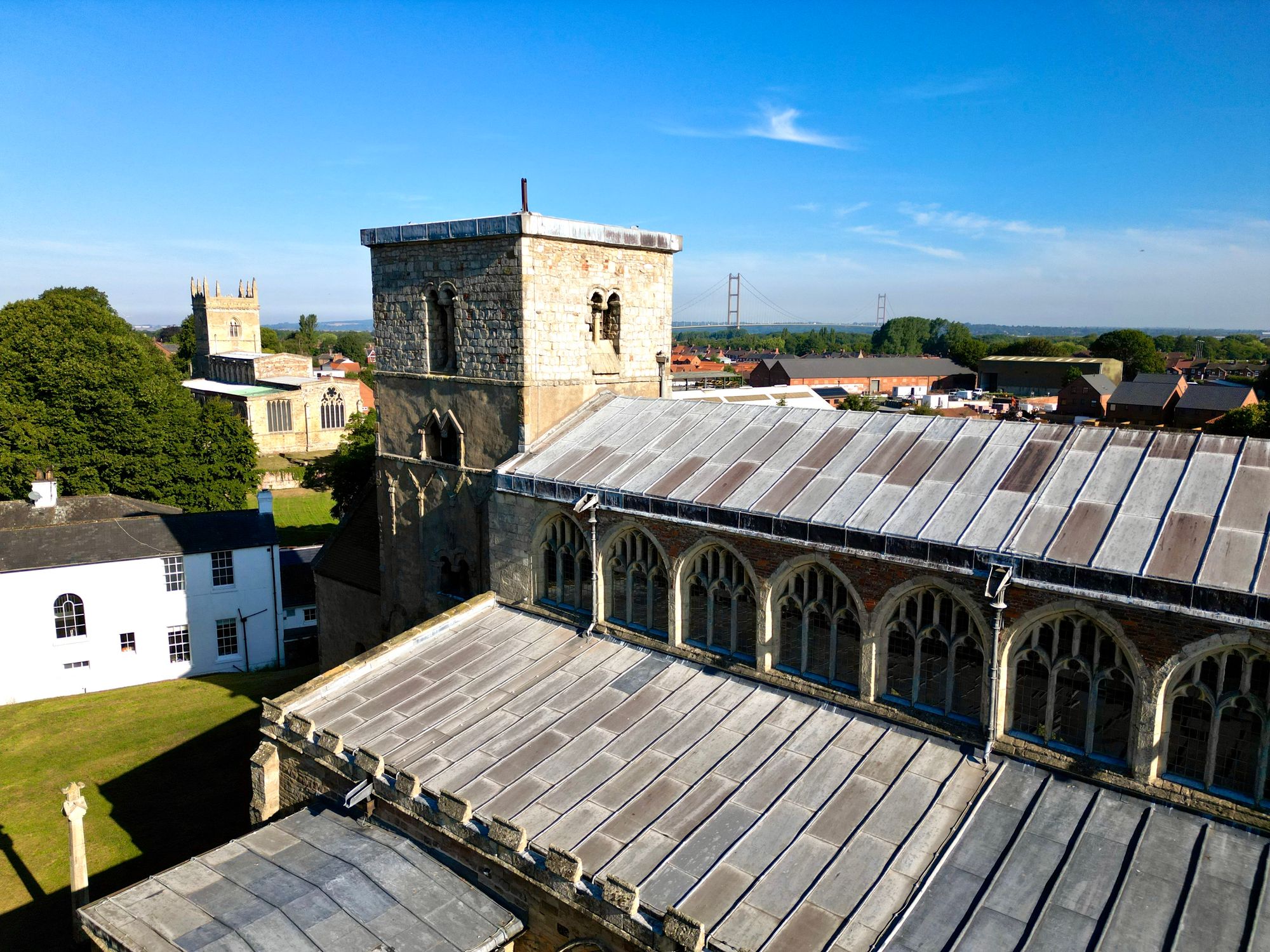
Hexham Abbey - The C7th Anglo Saxon Crypt
If you want to walk into a space that has been unchanged for 1300 years then Hexham Abbey is your destination. (Also visit Ripon Cathedral's crypt too). St. Wilfred had it built after seeing the stone buildings of Rome.








All Saints', Brixworth, Northamptonshire

Uplifted by my interaction with the church wall, I choose to look for clues as to the building's past in the material. I choose to ignore the fact that the majority of this building is perhaps one of the last surviving C7th buildings in the country.
I also choose to nullify the notion that this place might have been the far reaching epicentre of the pomp and glory of Mercian kings - a building to show that they were equal to that of Rome. I also tuck away the knowledge that this place was built in the Roman style - to encourage the kind of hegemony that would eventually lead to the bringing of all the parts of this island together under one idiom.
I ignore it all and start with the micro; and what it reveals is breathtaking.
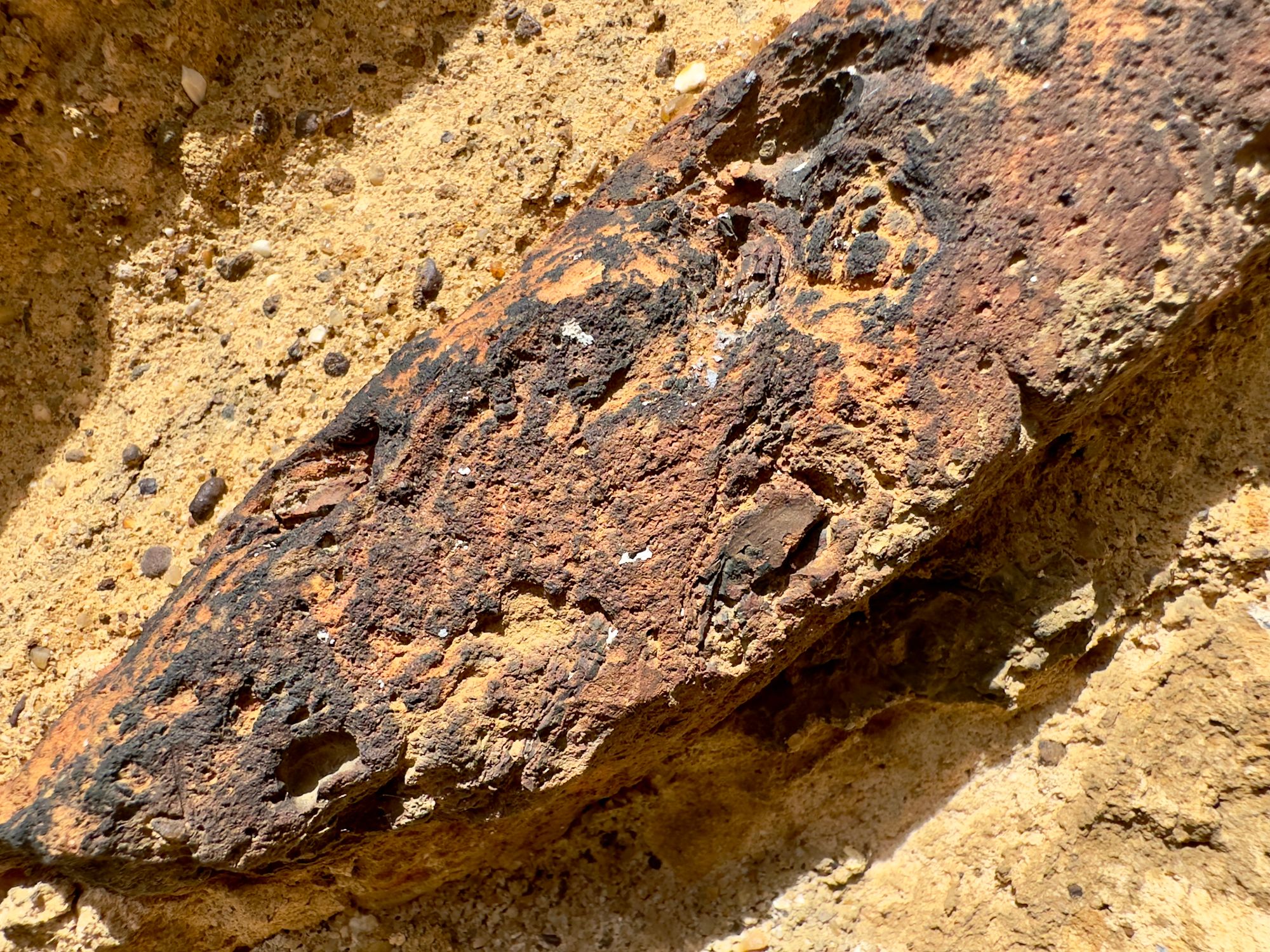
There are Roman brick tiles embedded in the wall, they are around 1700 years old. They still have the patterns and swirls of hand-slapped clay (tugged up from the earth around Leicester and Towcester they say).
Parts of the brick tiles are still burnt from their firing and parts still hold the grit that got caught up in their making. Some have the lines of the drying rack still on them.

The bricks have been used intermittently throughout the building. They would have been old when the building was first built in c. AD675.

The most telling use of the bricks is within the arches and arcades, where they have been fashioned in arrays that remind me of an open concertina.



It is in the use of the Roman tiles that the Saxon builders have encoded their intention: for they use the Roman tiles to fashion the most Roman of things - the segmental arch - the bastion of the basilica, an embryo of classicism. They use the Roman stuff to build a Roman thing. There is intent within these walls without reading any history books.
Their story is enshrined within the materials of the building. The bricks used in this way are signifiers of a rooted culture growing in confidence and comparing their journey to that of the mighty Roman Empire.
And as I stand further back and observe the context of the brick, I see that the Saxons have added their own vernacular in a murmuration of herringbone rubble.
This herringbone and brick is a fusion that shines through the cataracts of time in utterly beautiful combinations.

And further back the arcade bounces like a skimmed stone. These arches were once on the inside and have now been infilled, forming the intersection between nave and side aisles of the C7th basilica.

And a little further out... a later addition - a mere pup in the scheme of things - a C10th stair turret. One of only four that survive intact.

Add a late medieval twist - with the addition of a Gothic tower and spire and the church is complete.

Our journey is complete. From micro to macro:


Members can unlock extra content from Brixworth here:


All Saints', Wing, Buckingamshire.
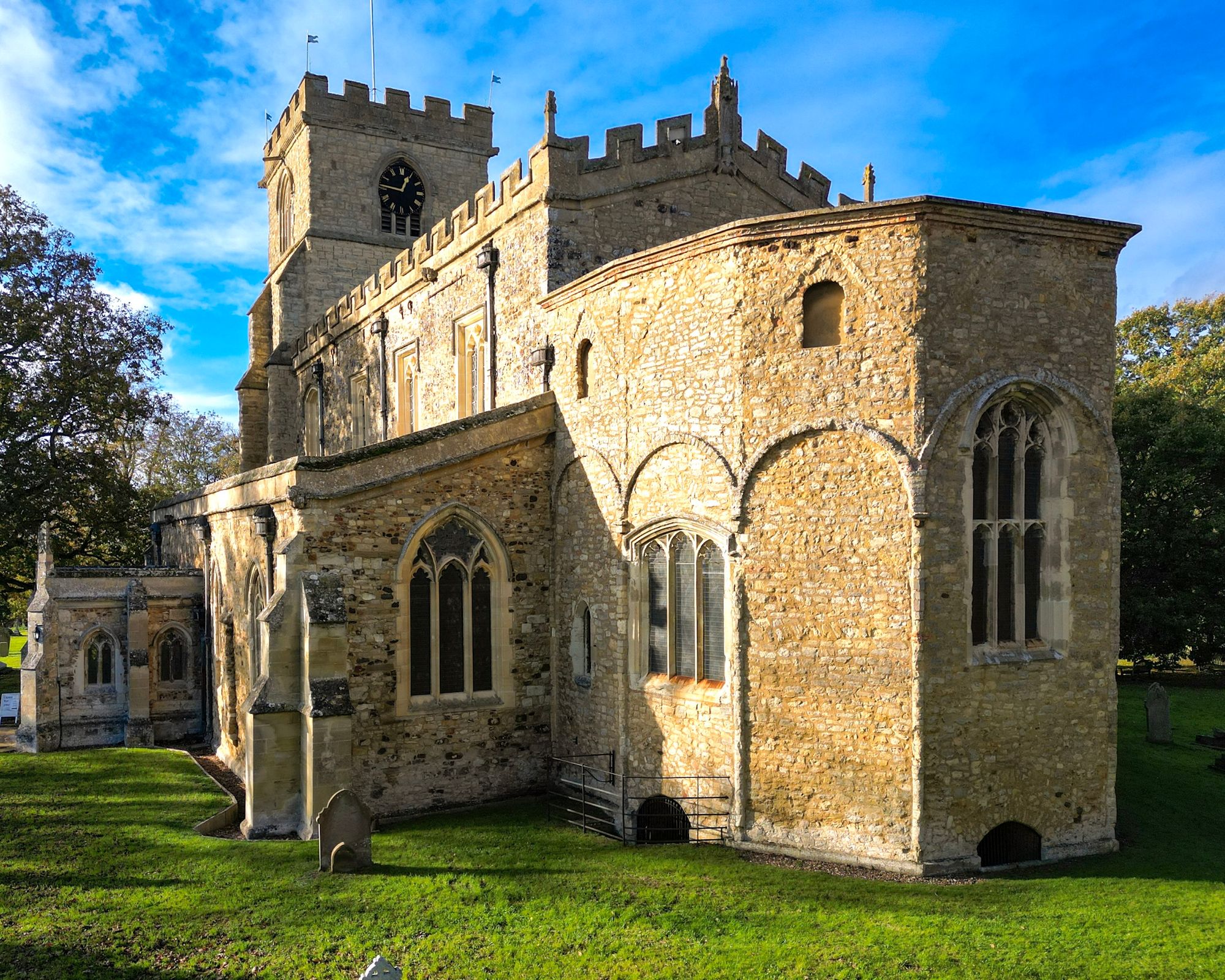
I came to Wing in Buckinghamshire to see just one thing: the Anglo Saxon apse to the church. The apse is C10th and is thought to have been built for Aelfgifa, sister-in-law to King Edgar.



For me, this is more than just a building. With its classical references it betrays the power of Rome upon the imagination of the Anglo Saxon.

I take out my 300mm lens and pan in on the detail.
Indeed, from this viewpoint I could easily be in a marketplace in Rome.
Anyone for macchiato? ☕️
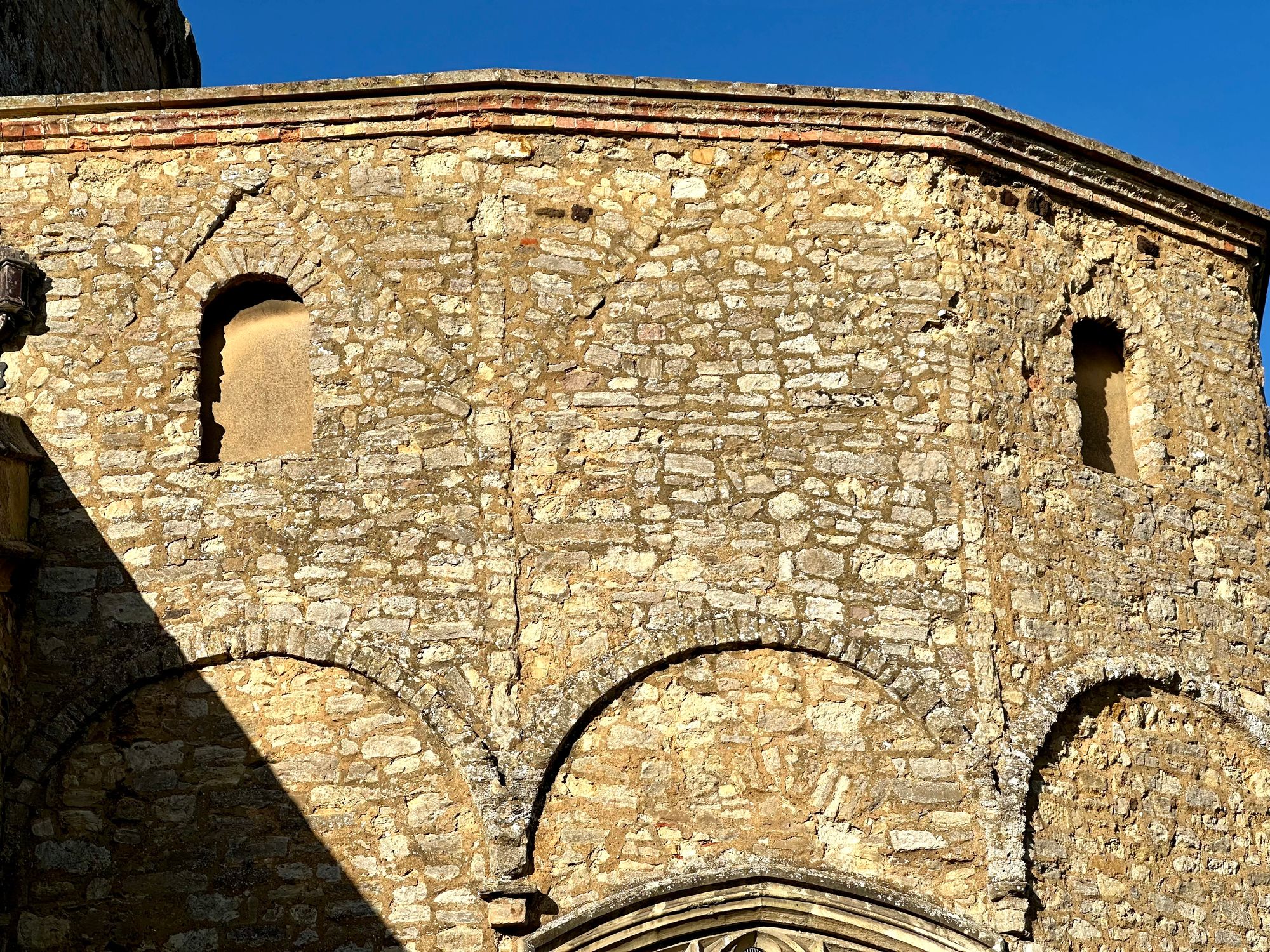
Members can unlock extra content on Wing here:

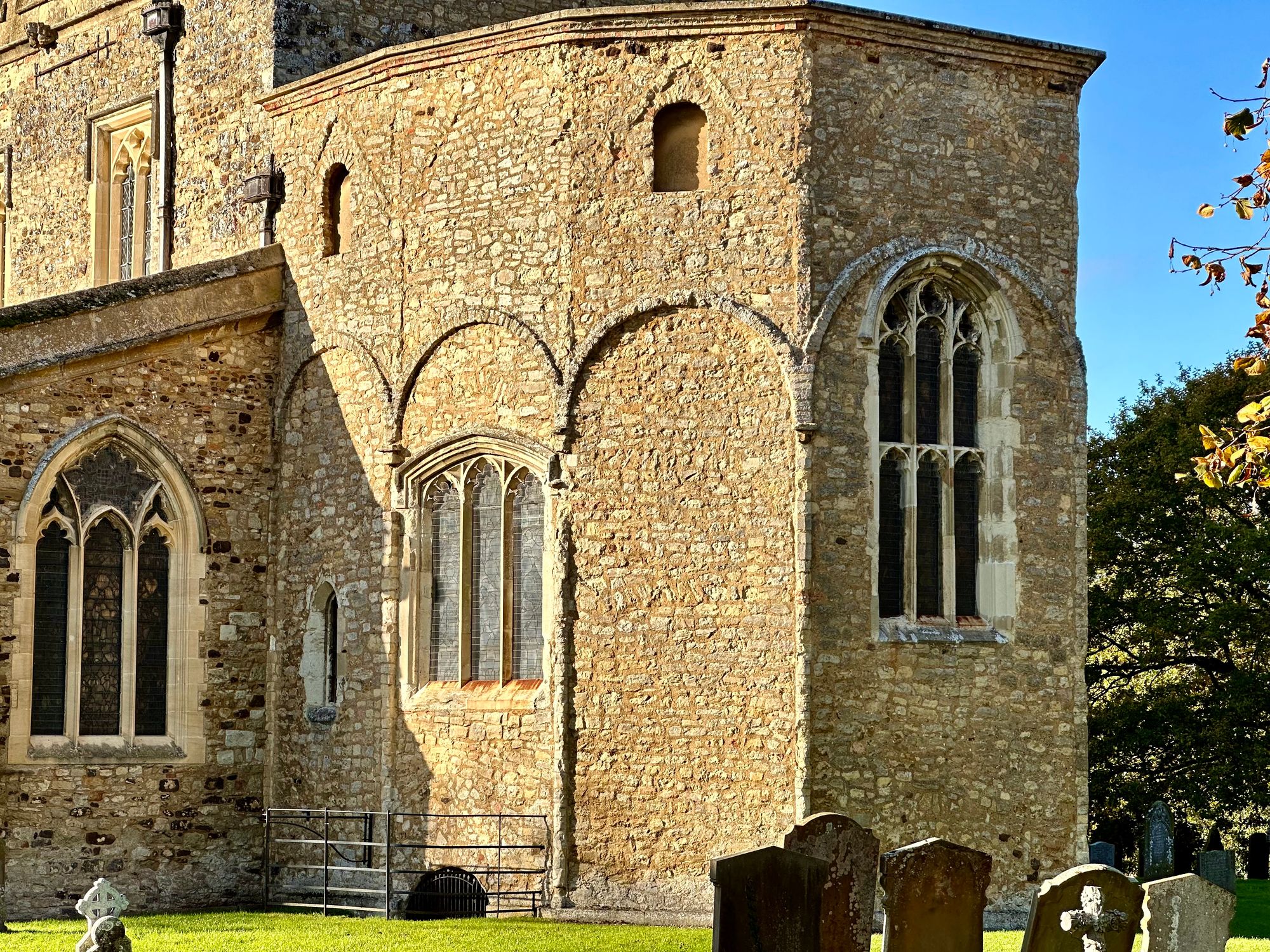
Ripon Cathedral - the C7th Crypt (672AD)
Another one of St. Wilfrid's creations - a space that was once part of an elaborate cycle of pilgrimage.

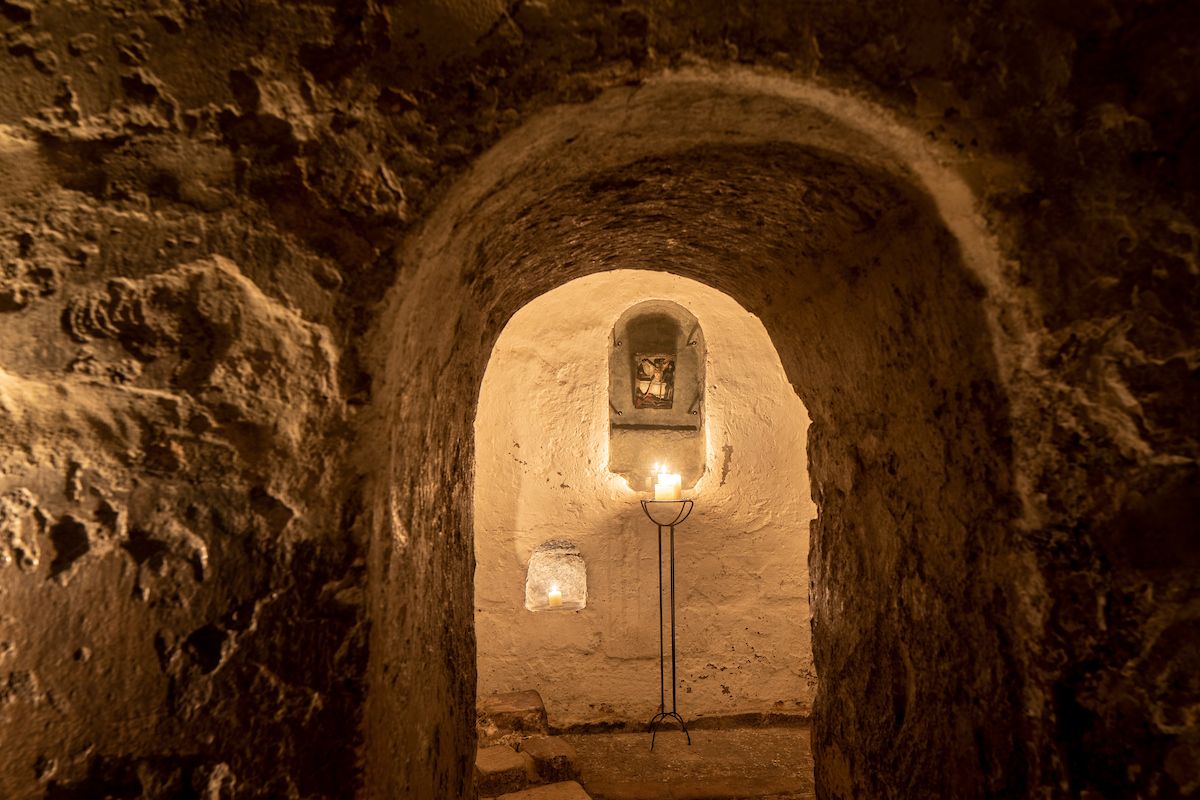
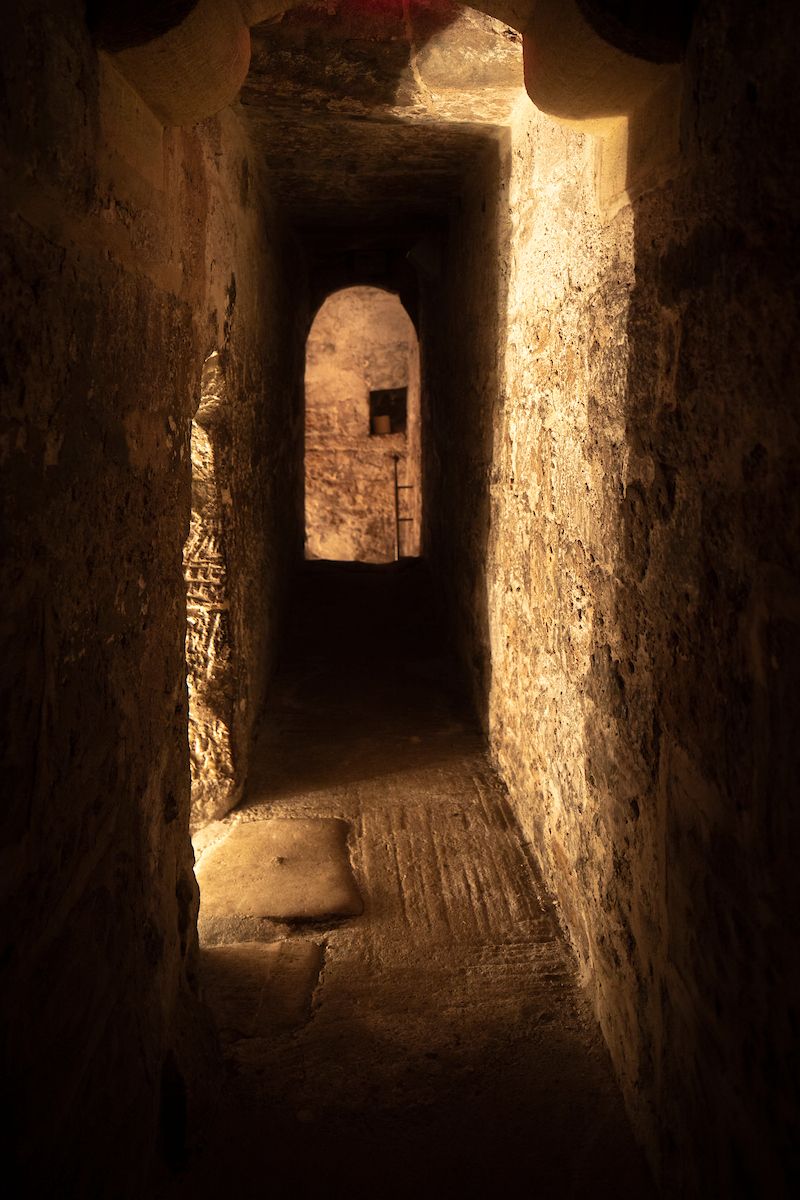

All Saints', Earls Barton, Northamptonshire.
It wasn't the easiest of park ups for the camper, for Earls Barton is a busy little village. But, the wait was worth it. Earls Barton has one of the best surviving Anglo-Saxon towers in England. It's dated to around AD970.
For me its appeal is in the patterned long and short work that makes it look like a gingerbread tower. They have built a thing of compression, but structure it out with slim plinths of stone, as if it were held together by tension (like a timber framed house).
The Saxons didn't have a stone building culture - indeed timber derives from an old Saxon word meaning 'building.' A number of surviving Saxon texts and poems talk of extant stone buildings as if they have been built by giants (in reality the Romans).




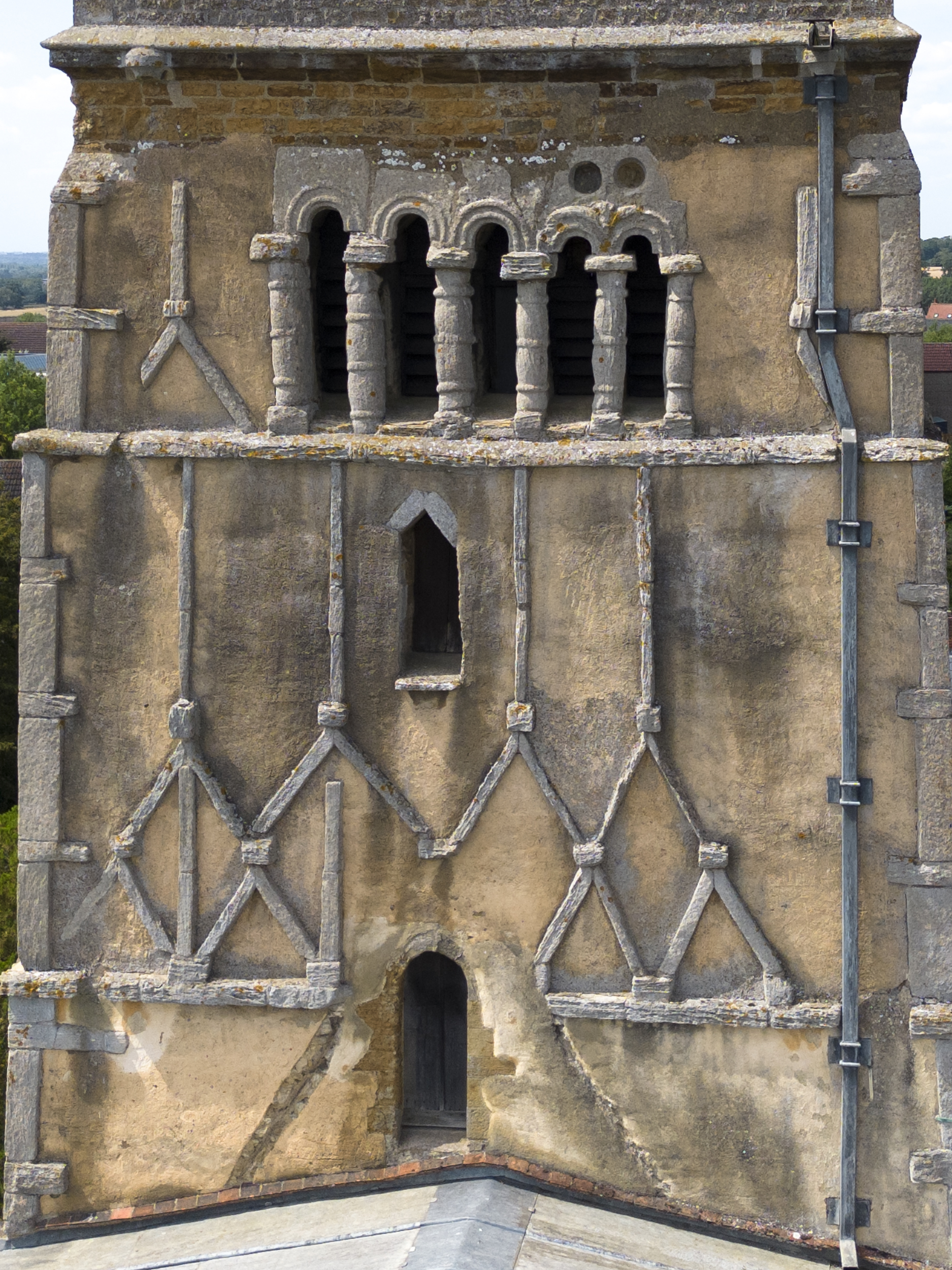
St. Andrew, Brigstock, Northamptonshire
St. Andrew at Brigstock is renowned for its late C10th Saxon tower and circular stair turret. The spire is a later addition.

I head into the church at St. Andrew and am taken aback at how beautiful the interior is.
I stand and take it all in until the sun appears and dapples the chancel with light. I can hear the lead roof and timbers expanding above my head.

The Saxon tower arch is muscular. The listing says it has cyclopic unmoulded blocks representing capitals. The doorway to the staircase has splayed tops.
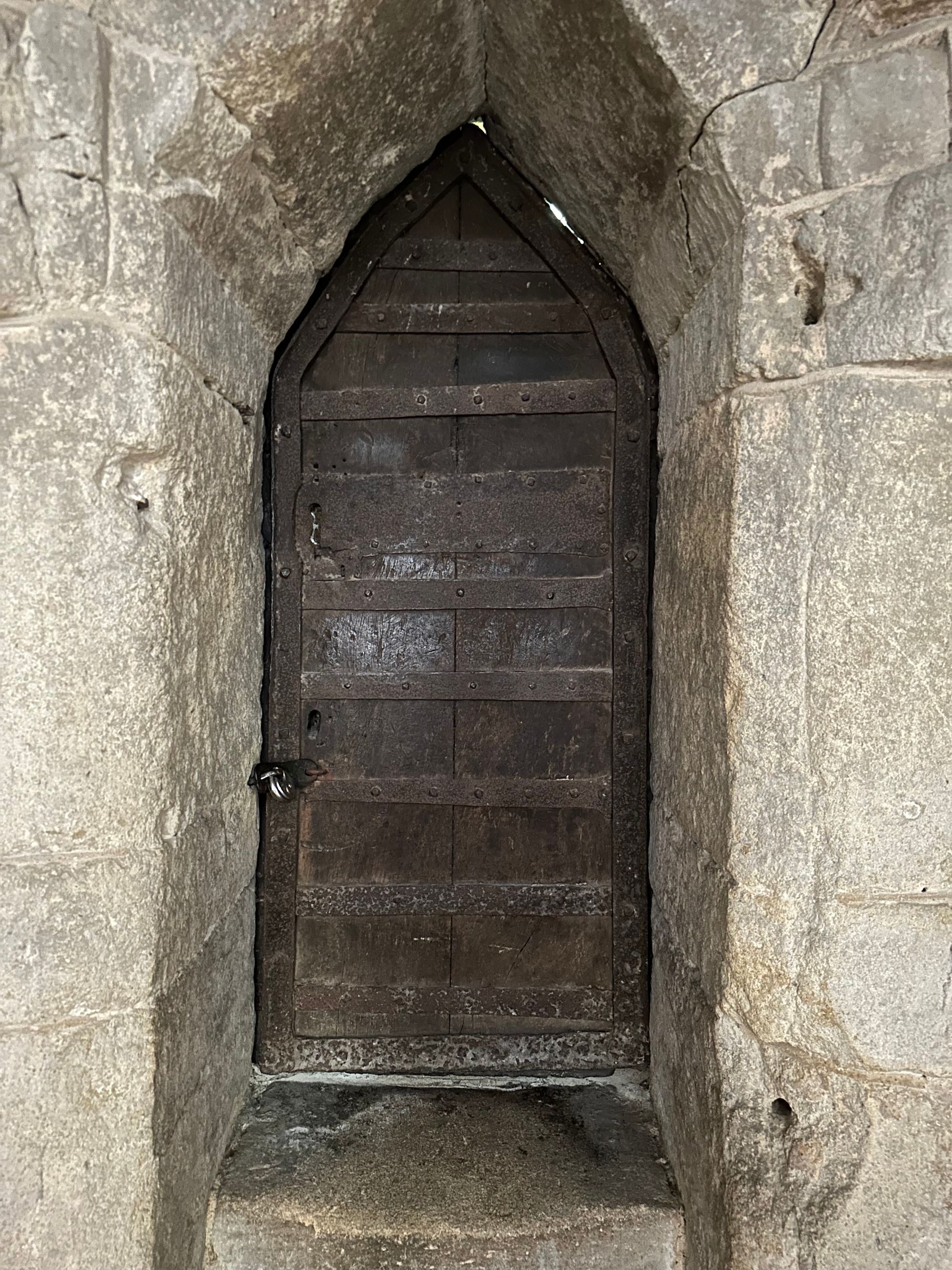
Members can unlock extra content on Brigstock here:

Holy Trinity Church, Bosham, Sussex

Holy Trinity is captured indelibly in the Bayeux Tapestry.
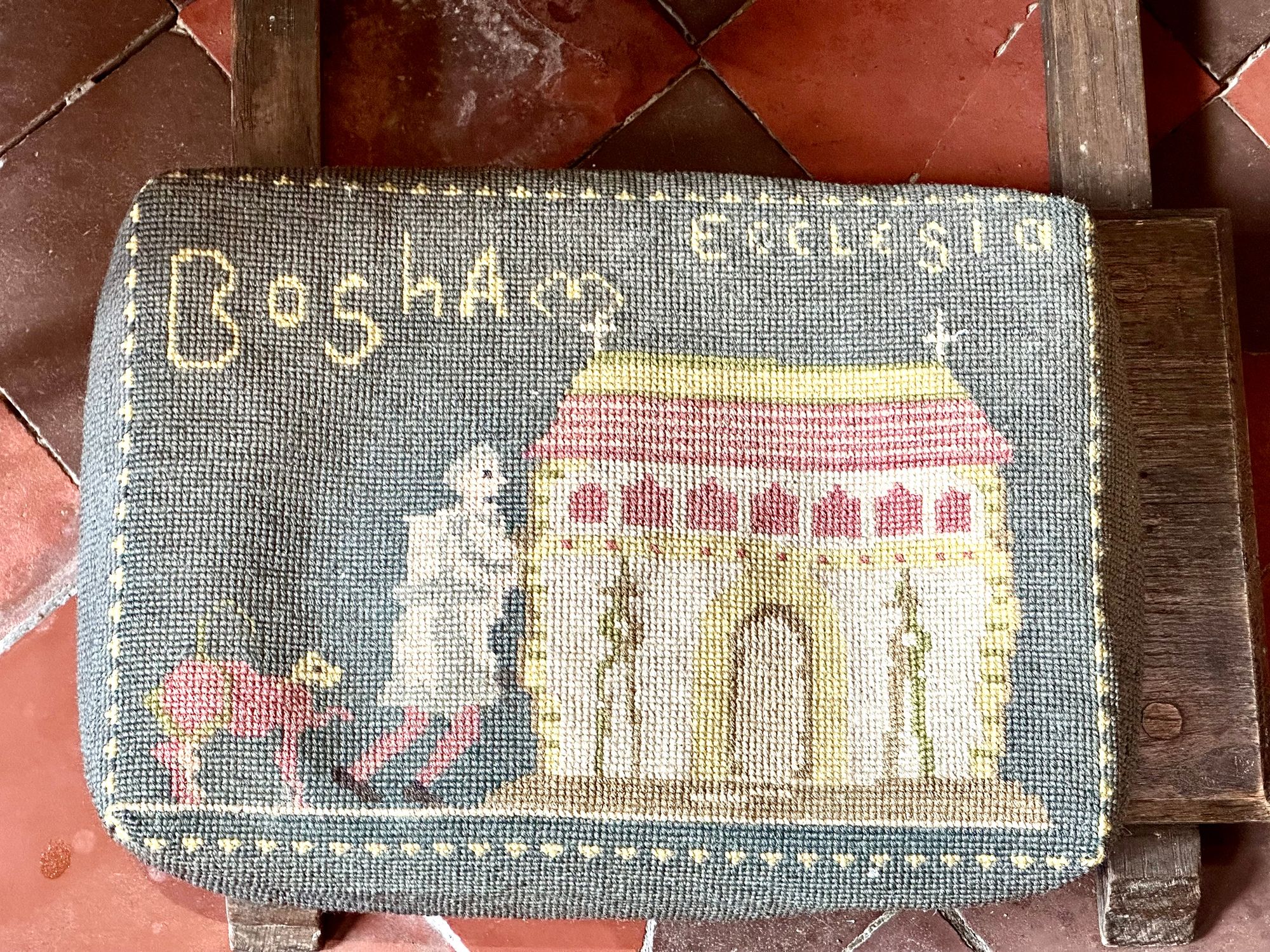
When we look at the first two stages of the church tower we are seeing the same building that King Harold saw (C11th). It is said (and disputed) that Harold is now buried beneath the chancel and, if he is, he is buried next to the daughter of King Canute who lost her life in the mill stream nearby.
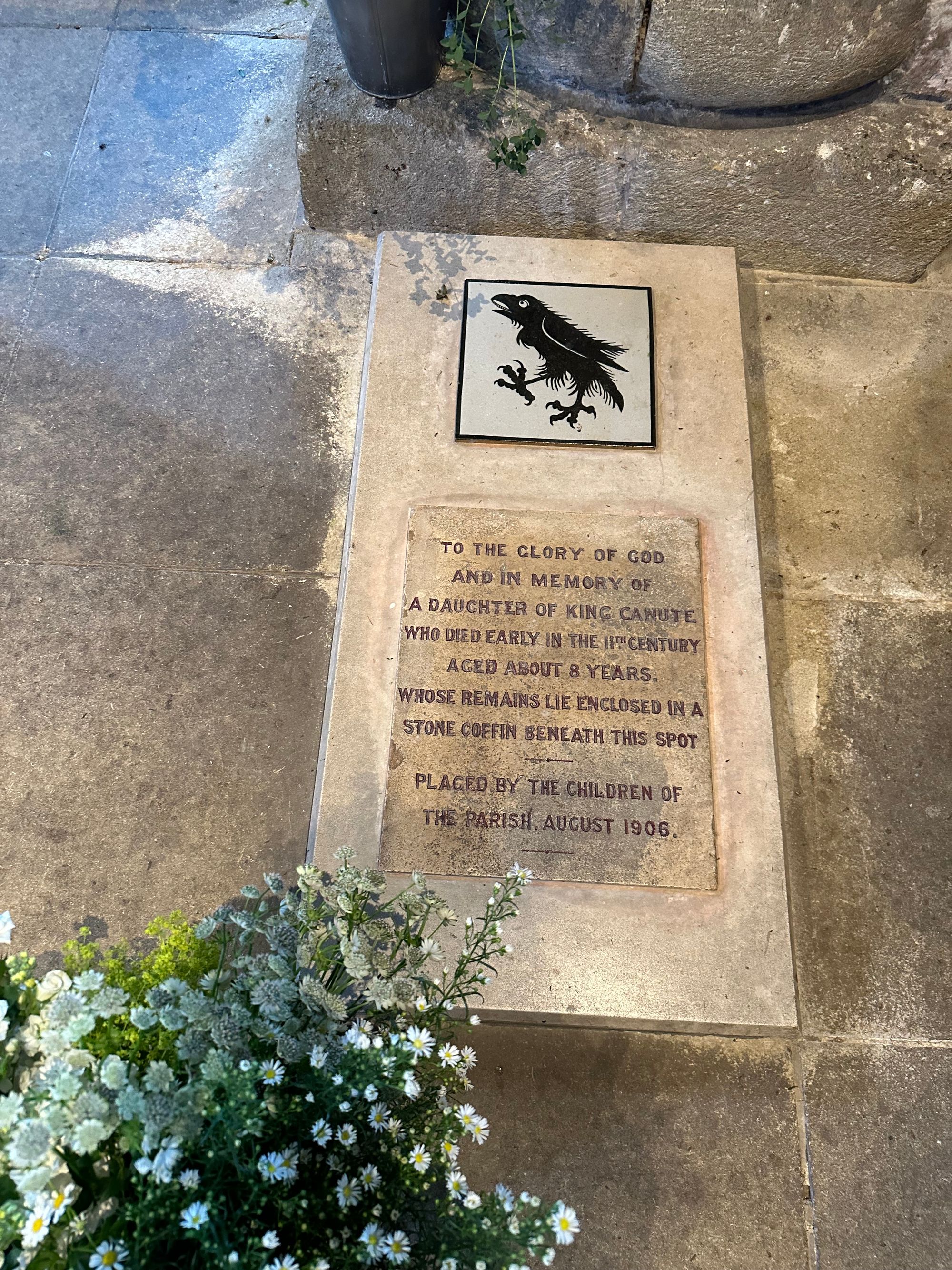
The Church Fabric



The church is built of Mixon stone (used by the Romans at Fishbourne), Top Chalk, Sarsen stone and Quarr stone rubble. The church is material witness to the pre-conquest world and the ensuing embossing of the post-conquest world of the Normans.

Members can unlock extra content on Bosham here:


St. John the Baptist, Inglesham - Madonna and Child
During a church reconsecration - the Saxon Madonna and Child - (which bore the vagaries of the weather outside, and had the misfortune to be used as a scratch dial to measure the canonical hours) was brought inside, as a matter of continuity, and survives resplendent in the side chapel.

In this little church of scintillating Gothic, the Madonna is an anomaly. The stylistic references to Rome and the Byzantime are obvious. The mid to late Saxon period saw an increase in references to Rome and its material culture as a way of underpinning the legitimacy of kings. The insertion of the carving into the wall of the 'new' building helps keep the Anglo Saxon backstory alive through the material record.



Members can unlock extra content on Inglesham here:

Become a Member
It takes a day a week to produce this digest. With your support, I’m able to keep this digest free and public facing. 📸🏛🚐
Support this digest and get access to a world of immersive content. Click the box below to check out the membership options:

Gift a Membership
Gift a membership to somebody else. They will receive an email with a message from you, and instructions on how to activate it. Gift Memberships can last indefinitely or can be limited to 12 months.
Sponsor a Membership
More InformationThank You!
Photographs and words by Andy Marshall (unless otherwise stated). Most photographs are taken with Iphone 14 Pro and DJI Mini 3 Pro.








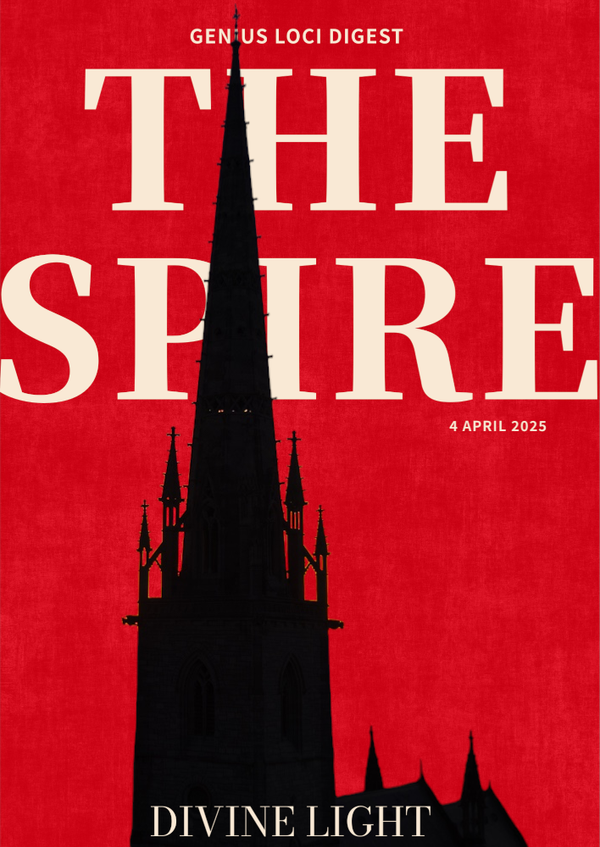
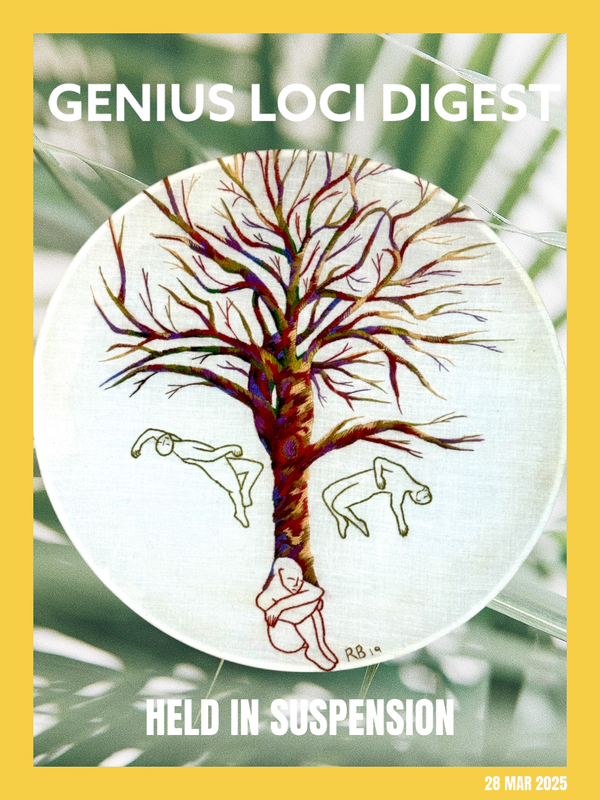

Member discussion